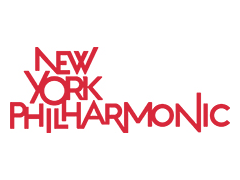
The New York Philharmonic is an American symphony orchestra based in New York City. Known officially as the Philharmonic-Symphony Society of New York, Inc., and globally known as the New York Philharmonic Orchestra (NYPO) or the New York Philharmonic-Symphony Orchestra, it is one of the leading American orchestras popularly called the "Big Five". The Philharmonic's home is David Geffen Hall, at New York's Lincoln Center for the Performing Arts.

The Boston Symphony Orchestra (BSO) is an American orchestra based in Boston. It is the second-oldest of the five major American symphony orchestras commonly referred to as the "Big Five". Founded by Henry Lee Higginson in 1881, the BSO performs most of its concerts at Boston's Symphony Hall and in the summer performs at Tanglewood.
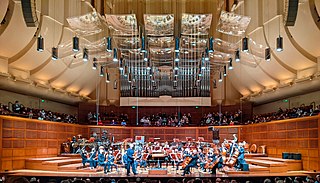
The San Francisco Symphony, founded in 1911, is an American orchestra based in San Francisco, California. Since 1980 the orchestra has been resident at the Louise M. Davies Symphony Hall in the city's Hayes Valley neighborhood. The San Francisco Symphony Youth Orchestra and the San Francisco Symphony Chorus (1972) are part of the organization. Michael Tilson Thomas became the orchestra's music director in 1995, and concluded his tenure in 2020 when Esa-Pekka Salonen took over the position.

The Chicago Symphony Orchestra (CSO) is an American symphony orchestra based in Chicago, Illinois. Founded by Theodore Thomas in 1891, the ensemble has been based in the Symphony Center since 1904 and plays a summer season at the Ravinia Festival. Klaus Mäkelä was named music director-designate in 2024, with his first contractual season to begin in 2027. The orchestra's most recent music director is Riccardo Muti, whose tenure spanned the seasons from 2010 to 2023, and he continues to perform on occasion as director-emeritus. The CSO is one of the American orchestras commonly referred to as the "Big Five".

Arturo Toscanini was an Italian conductor. He was one of the most acclaimed and influential musicians of the late 19th and early 20th century, renowned for his intensity, his perfectionism, his ear for orchestral detail and sonority, and his eidetic memory. He was at various times the music director of La Scala in Milan and the New York Philharmonic. Later in his career, he was appointed the first music director of the NBC Symphony Orchestra (1937–1954), and this led to his becoming a household name, especially in the United States, through his radio and television broadcasts and many recordings of the operatic and symphonic repertoire.

The Philadelphia Orchestra is an American symphony orchestra, based in Philadelphia. One of the "Big Five" American orchestras, the orchestra is based at the Kimmel Center for the Performing Arts, where it performs its subscription concerts, numbering over 130 annually, at Marian Anderson Hall.
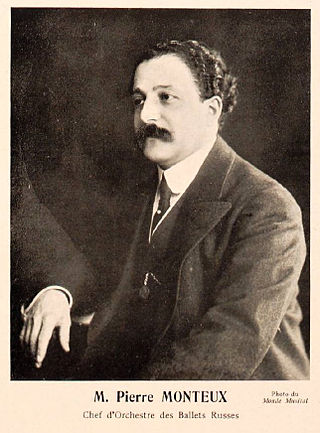
Pierre Benjamin Monteux was a French conductor. After violin and viola studies, and a decade as an orchestral player and occasional conductor, he began to receive regular conducting engagements in 1907. He came to prominence when, for Sergei Diaghilev's Ballets Russes company between 1911 and 1914, he conducted the world premieres of Stravinsky's The Rite of Spring and other prominent works including Petrushka, The Nightingale, Ravel's Daphnis et Chloé, and Debussy's Jeux. Thereafter he directed orchestras around the world for more than half a century.

Leopold Anthony Stokowski was a British-born American conductor. One of the leading conductors of the early and mid-20th century, he is best known for his long association with the Philadelphia Orchestra. He was especially noted for his free-hand conducting style that spurned the traditional baton and for obtaining a characteristically sumptuous sound from the orchestras he directed.
RCA Records is an American record label. Since 2008, it has been owned by Sony Music Entertainment, a subsidiary of Sony Group Corporation.
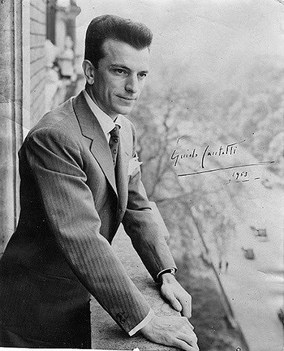
Guido Cantelli was an Italian orchestral conductor. Toscanini elected him his "spiritual heir" since the beginnings of his career. He was named Music Director of La Scala, Milan in November 1956, but his promising career was cut short only one week later by his death at the age of 36 in the 1956 Paris DC-6 crash in France en route to the United States.

Erich Leinsdorf was an Austrian-born American conductor. He performed and recorded with leading orchestras and opera companies throughout the United States and Europe, earning a reputation for exacting standards as well as an acerbic personality. He also published books and essays on musical matters.

Charles Munch was an Alsatian French symphonic conductor and violinist. Noted for his mastery of the French orchestral repertoire, he was best known as music director of the Boston Symphony Orchestra.

Eugene Ormandy was a Hungarian-born American conductor and violinist, best known for his association with the Philadelphia Orchestra, as its music director. His 44-year association with the orchestra is one of the longest enjoyed by any conductor with any American orchestra. Ormandy made numerous recordings with the orchestra, and as guest conductor with European orchestras, and achieved three gold records and two Grammy Awards. His reputation was as a skilled technician and expert orchestral builder.
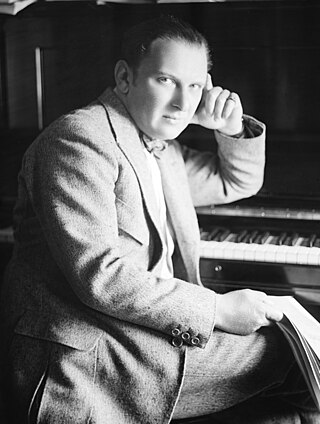
Frederick Martin Reiner was an American conductor of opera and symphonic music in the twentieth century. Hungarian born and trained, he emigrated to the United States in 1922, where he rose to prominence as a conductor with several orchestras. He reached the pinnacle of his career while music director of the Chicago Symphony Orchestra in the 1950s and early 1960s.

Jan Peerce was an American operatic tenor. Peerce was an accomplished performer on the operatic and Broadway concert stages, in solo recitals, and as a recording artist. He is the father of film director Larry Peerce.

Artur Rodziński was a Polish and American conductor of orchestral music and opera. He began his career after World War I in Poland, where he was discovered by Leopold Stokowski, who invited him to be his assistant with the Philadelphia Orchestra. This engagement led to Rodziński becoming music director of the Los Angeles Philharmonic, Cleveland Orchestra, New York Philharmonic, and the Chicago Symphony Orchestra. He also prepared the NBC Symphony Orchestra for Arturo Toscanini before the Italian conductor's debut with them. A dispute in Chicago led to Rodziński's dismissal in 1948, whereupon he shifted his career to Europe, eventually settling in Italy, although continuing to maintain a home in Lake Placid, New York. In November 1958, beset by heart disease, he made his professional return to the United States for the first time in a decade, conducting acclaimed performances of Richard Wagner's Tristan und Isolde with the Lyric Opera of Chicago. Exhausted, he checked into Massachusetts General Hospital where he died 11 days later.
Charles Allan Gerhardt was an American conductor, record producer, and arranger.
Richard Mohr was one of RCA Victor’s most prominent producers of classical and operatic music recordings from 1943 through 1977. His producing credits included recording the casts of the world premieres of Samuel Barber's Vanessa and Gian Carlo Menotti's Amahl and the Night Visitors, as well as the first LP recordings of Ernani,Luisa Miller and Lucrezia Borgia and three versions each of Rigoletto,Aida,La Traviata and Il Trovatore.
John Pfeiffer was a classical recording producer, a design engineer, and an occasional electronic music composer.

Arturo Toscanini was an Italian conductor. He was one of the most acclaimed musicians of the late 19th and 20th century. Toscanini was a prolific recording artist, having conducted many recordings from 1920 until his retirement in 1954.


















